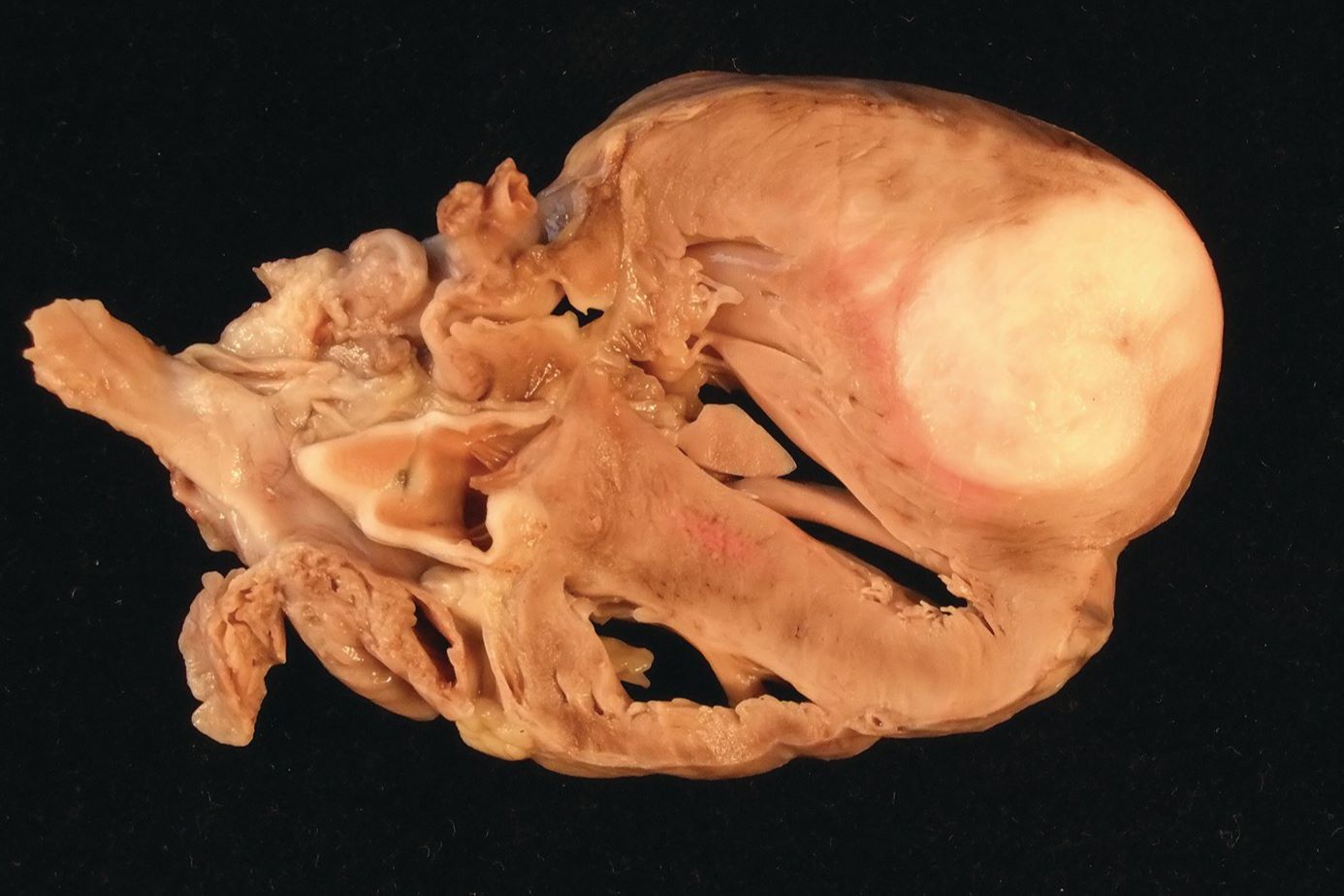
Meningeal Angiomatosis Cleft Hypoplastic Left Heart is a rare and complex medical condition. This disorder involves a combination of vascular malformations in the brain's meninges, cleft palate, and an underdeveloped left side of the heart. Understanding this condition can be challenging due to its rarity and the intricate interplay between its components. Symptoms often include seizures, developmental delays, feeding difficulties, and heart problems. Diagnosis typically requires a multidisciplinary approach, involving neurologists, cardiologists, and geneticists. Treatment options vary and may include surgery, medication, and supportive therapies. This article will provide 30 essential facts to help you grasp the basics of this intricate condition. Whether you're a student, a parent, or just curious, these facts will offer valuable insights into Meningeal Angiomatosis Cleft Hypoplastic Left Heart.
Key Takeaways:
- Meningeal angiomatosis, cleft lip and palate, and hypoplastic left heart syndrome are rare and complex conditions that require specialized care and treatment due to their unique challenges and potential impact on multiple aspects of health.
- Understanding the symptoms, diagnosis, and treatment options for these conditions is crucial for effective management and requires coordinated care among specialists, genetic counseling, and strong support systems for affected families.
What is Meningeal Angiomatosis?
Meningeal angiomatosis is a rare condition involving abnormal blood vessels in the meninges, the protective layers covering the brain and spinal cord. Understanding this condition can help in recognizing symptoms and seeking appropriate treatment.
- Rare Condition: Meningeal angiomatosis is extremely rare, with only a few documented cases worldwide.
- Abnormal Blood Vessels: It involves the formation of abnormal blood vessels in the meninges.
- Symptoms: Symptoms can include headaches, seizures, and neurological deficits.
- Diagnosis: MRI and CT scans are commonly used to diagnose this condition.
- Treatment: Treatment often involves surgery to remove the abnormal vessels.
- Prognosis: Prognosis varies depending on the extent of the condition and the success of the treatment.
Understanding Cleft Lip and Palate
Cleft lip and palate are congenital deformities that occur when a baby's lip or mouth does not form properly during pregnancy. These conditions can affect feeding, speech, and hearing.
- Common Birth Defect: Cleft lip and palate are among the most common birth defects.
- Formation: They occur when the tissues of the lip and/or palate do not fuse properly during fetal development.
- Types: There are different types, including unilateral and bilateral clefts.
- Causes: Causes can include genetic factors and environmental influences.
- Diagnosis: Ultrasound can often detect cleft lip and palate before birth.
- Treatment: Treatment usually involves surgery, speech therapy, and dental care.
- Impact on Feeding: Babies with cleft lip and palate may have difficulty feeding.
- Speech Issues: Speech problems are common and may require therapy.
- Hearing Problems: Some children with cleft palate may experience hearing loss.
Hypoplastic Left Heart Syndrome (HLHS)
Hypoplastic left heart syndrome is a complex and rare congenital heart defect where the left side of the heart is underdeveloped. This condition requires immediate medical attention after birth.
- Serious Heart Defect: HLHS is a serious and life-threatening condition.
- Underdeveloped Heart: It involves an underdeveloped left side of the heart.
- Symptoms: Symptoms include cyanosis, difficulty breathing, and poor feeding.
- Diagnosis: Echocardiograms are used to diagnose HLHS.
- Treatment: Treatment often involves a series of surgeries or a heart transplant.
- Prognosis: Prognosis has improved with advances in surgical techniques.
- Genetic Factors: Genetic factors may play a role in the development of HLHS.
- Prenatal Diagnosis: HLHS can often be diagnosed before birth through fetal echocardiography.
- Long-Term Care: Children with HLHS require lifelong medical care and monitoring.
Combining Conditions: Meningeal Angiomatosis, Cleft Lip and Palate, and HLHS
When these conditions occur together, they present a unique set of challenges for diagnosis and treatment. Understanding the interplay between these conditions is crucial for effective management.
- Rare Combination: The combination of these conditions is extremely rare.
- Complex Diagnosis: Diagnosing multiple conditions requires a multidisciplinary approach.
- Surgical Challenges: Surgery is often more complex when multiple conditions are present.
- Coordinated Care: Coordinated care among specialists is essential for treatment.
- Genetic Counseling: Genetic counseling may be recommended for affected families.
- Support Systems: Support systems, including medical, emotional, and social support, are vital for families dealing with these conditions.
Final Thoughts on Meningeal Angiomatosis Cleft Hypoplastic Left Heart
Understanding Meningeal Angiomatosis Cleft Hypoplastic Left Heart can be overwhelming, but knowing the facts helps. This rare condition involves complex medical issues that require specialized care. Early diagnosis and treatment are crucial for managing symptoms and improving quality of life. Families dealing with this condition should seek support from medical professionals and support groups. Staying informed about the latest research and treatments can make a significant difference. Remember, you're not alone in this journey. Many resources are available to help navigate the challenges. By staying proactive and connected, you can better manage the condition and support your loved ones. Keep learning, stay hopeful, and never hesitate to ask for help when needed.
Frequently Asked Questions
Was this page helpful?
Our commitment to delivering trustworthy and engaging content is at the heart of what we do. Each fact on our site is contributed by real users like you, bringing a wealth of diverse insights and information. To ensure the highest standards of accuracy and reliability, our dedicated editors meticulously review each submission. This process guarantees that the facts we share are not only fascinating but also credible. Trust in our commitment to quality and authenticity as you explore and learn with us.
